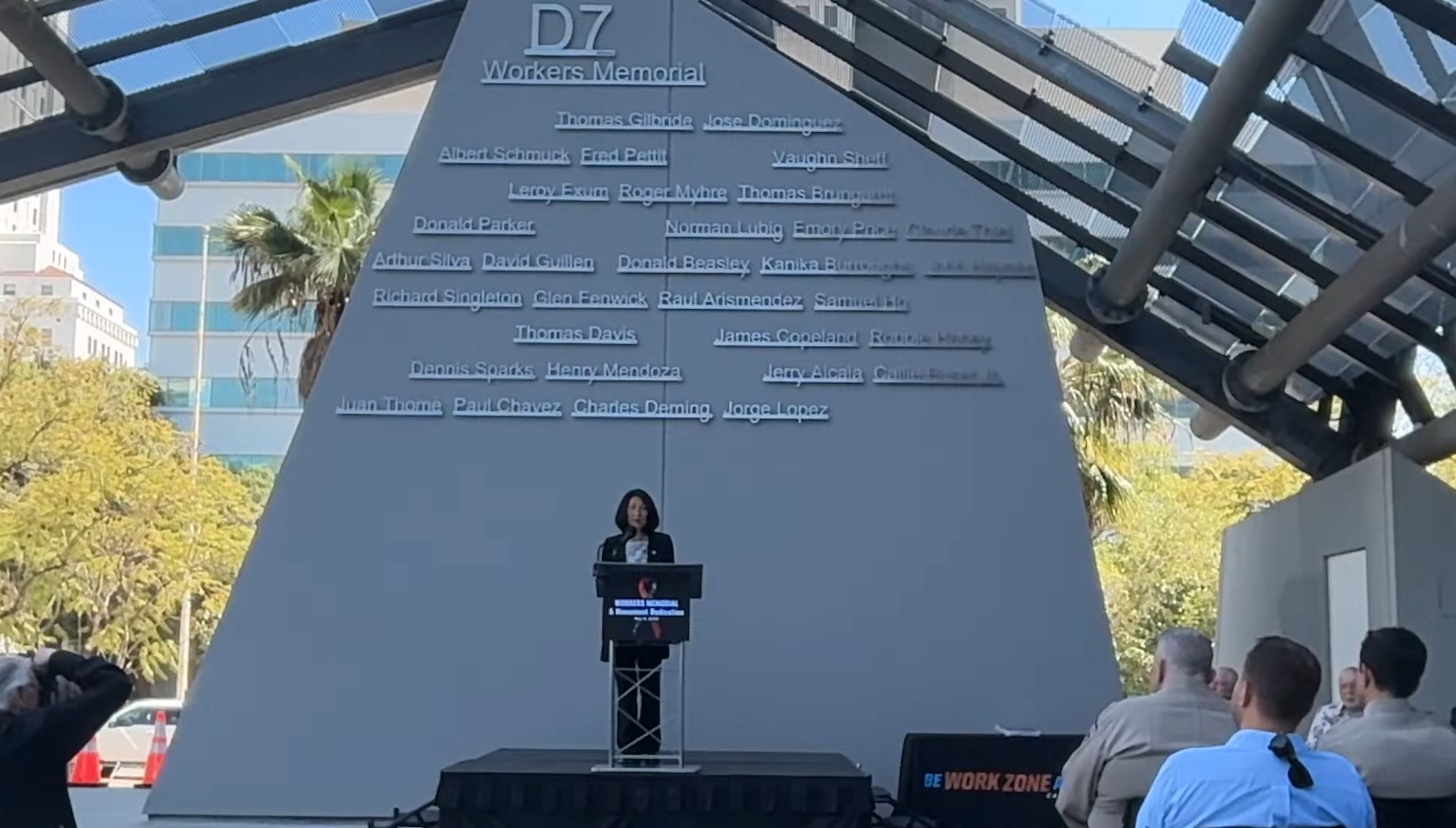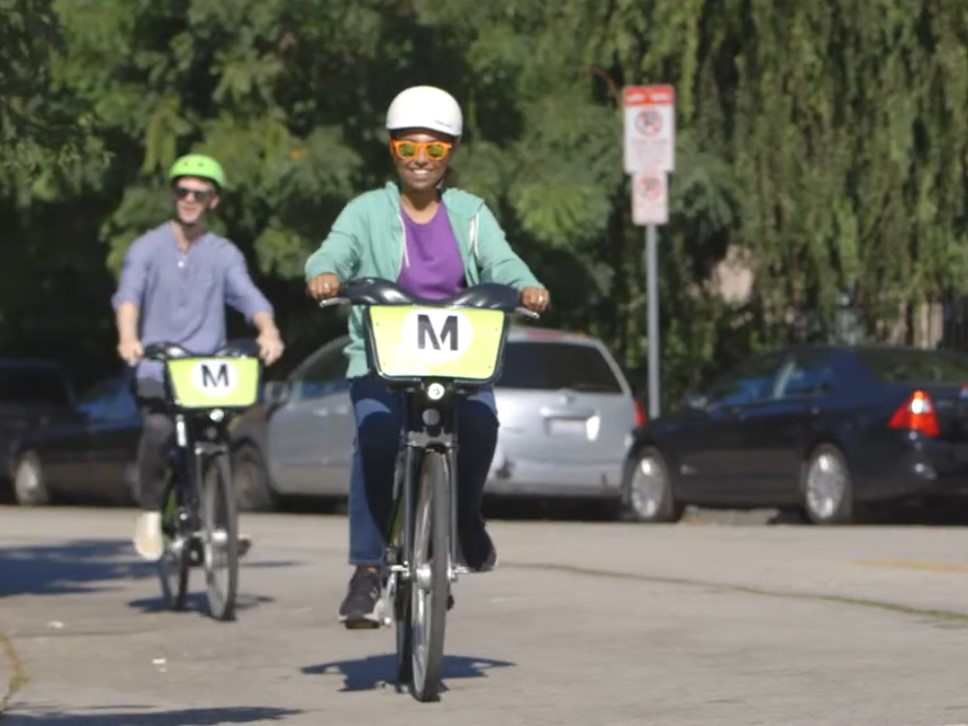
When Rojas Speaks, People Build Urban Models
(Editor's Note: On November 7, Antioch University hosted a forum entitled "A Future Without Cars." Professors, urban planners, and bike activists all spoke about how Los Angeles deserves a car-free future. Urban planner, Metro staffer and leader of the Latino Urban Forum led a workshop on pedestrian planning. Below are his notes on the event. To see more images from the event, check out the Streetsblog Flickr page.)
A Future without Cars? People, Bikes and Community in the 21st Century
by James Rojas
On Friday November 7, 2008 I participated in Antioch's University daylong workshop "A Future without Cars? People, Bikes, and Community in the 21st Century held in Culver City. For this workshop I developed an Interactive Pedestrian Exercise. This hour and half exercise taught participants to examine, experience, and create a pedestrian environment. The varied ages and ethnicity of the thirty plus participants offered a diverse perspective on creating the car free city.
The workshop began with a brief lecture on the Experience of Place: the Difficulties of Creating a Pedestrian Environment. I
informed the students of challenges involved with developing pedestrian
infrastructure. The task to create a pedestrian landscape sounds
simple, but individual perception plays a critical roll in its success.
We experience the world through our sense and the street is no
different. Factors such as climate, noise, smell, and
overall comfort are important to pedestrians. In addition, people walk
for different reasons. People walk for utilitarian reasons, for recreation, sightseeing, exercise, and just to think. It's
because pedestrians are on the streets for different reasons that makes
creating ideal walking environments so complicated. It's easier for us
to construct freeways because they are designed for vehicles, which
care very little about the environment. And the drivers
of these vehicles are more interested in getting to where they have to
go than enjoying their driving environment. After all, a
comfortable seat, air conditioning, and their favorite tunes are all
the artificial environment needed while driving a car.
The forty-five
minute walk audit to the adjacent park and intersection of Motor and
Overland Streets allowed participants to experience a comfortable and
uncomfortable walking environment.
The park illustrated a comfortable walking zone. We
walked through the park and stopped under a clump of tress. The green
foliage of the park cooled us down as well as the shade from the trees. Walking on the grass felt like carpet. The
clump of trees buffered the sounds of the cars moving on the street
allowing us to have a brief discussion of the environment.
The intersection of Motor and Overland illustrated an uncomfortable walking zone. The concrete side walk is hard to walk on and was narrow so people had to walk in almost a strait line. The
street was lined with palm trees, parking meters and electric poles.
There were no shade trees so the black asphalt made the walk very hot. The
noise from the moving cars was very loud preventing people from
speaking to each other. A gas station, small businesses and multi
family structures lined one side of the street while a fence with nice
landscaping lined the other side. These land uses did not support walking. By the end of this walk people were exhausted and could not wait to get back to the auditorium. With this brief walk, participants experienced the realities of being a pedestrian.
The one hour Never-Before-Seen Car Free Workshop
allowed the participants to apply what they have experienced with their
own personal backgrounds in creating a pedestrian landscape. The task
was to develop a pedestrian environment with supporting activities,
amenities and structures because I wanted them to understand the
critical role land use patterns have on transportation. The participants were arranged around tables of four to five. Each table was provided with trays of materials and a twelve inch foam core square to create their landscape. They
were given twenty minutes to create their visions and after this was
done they were given a minute to explain there creation.
Participants
provided in-depth, personal information through their 3-d model
building from selection of materials, placement, mapping, and the
narratives they used to explain their creations. Participants used the
materials in varying scales that allowed them to illustrate their
points. Some participants walked us through their space to others that
had large scale conceptual plans. From the placement of benches, and trees alongside a path, to relocating city hall, homes and stores connectivity was important. Mapping was a critical part of the models for creating a pedestrian landscape. These
techniques are reminiscent of Kevin Lynch's mapping exercises in "Image
of a City", because we begin to see patterns develop amongst
participants.
The ideas were so varied, yet very similar in capturing the experience of place. They create both real and fantasy worlds. People generally wanted interesting, comfortable pedestrian environments which were illustrated in many ways.
Senior citizens generally wanted benches, lightings, and creature comforts which help the walk. The analogy to a Rousseau painting one participant used illustrated the need for nature in the pedestrian realm. The natural elements such as trees, plants were supplemented with the introduction of animals. Many people talked about the need for public art to provide a personal experience to pedestrian zones.
Another segment of
the group took the opportunity to redesign the streets. They were two
to three references to the crooked and narrow streets of medieval
European cities which they felt promoted walking. Still another group took the opportunity to create plazas and centers for social activity. These spaces were designed to facilitate mobility with a sense of civic identity and social interaction by people who used them.
Another concept
from the group was how this exercise allowed them to restructure
society. The street was a way of educating at risk youth on how the
government system works. The pedestrian street was less about the
experiences of place and more about creating a utopian vision.
Lessons Learned
The interactive
pedestrian exercise was a very effective method for participants to
examine and create a pedestrian zone because they experienced and
created it. This method allows them to use their senses
on urban planning issues and the model building helps increases their
design fluency.
This method allows for the public to "speak" first rather than be spoken to. It makes people feel part of the process. Everyone participates regardless of background, language or age barriers. As
a researcher, it helps to understand how different age groups,
ethnicities, genders, and professions perceive the same project. While
this was a transportation project to some, it becomes a way of
restructing life for others. As architects, planners and policy makers,
it is important to gather information and understand the interpretation
of projects and policies. As a community member it is
important to understand the neighbor's personal perspectives on how to
view the work.
Lastly, this engaging exercise makes everyone feel good.





